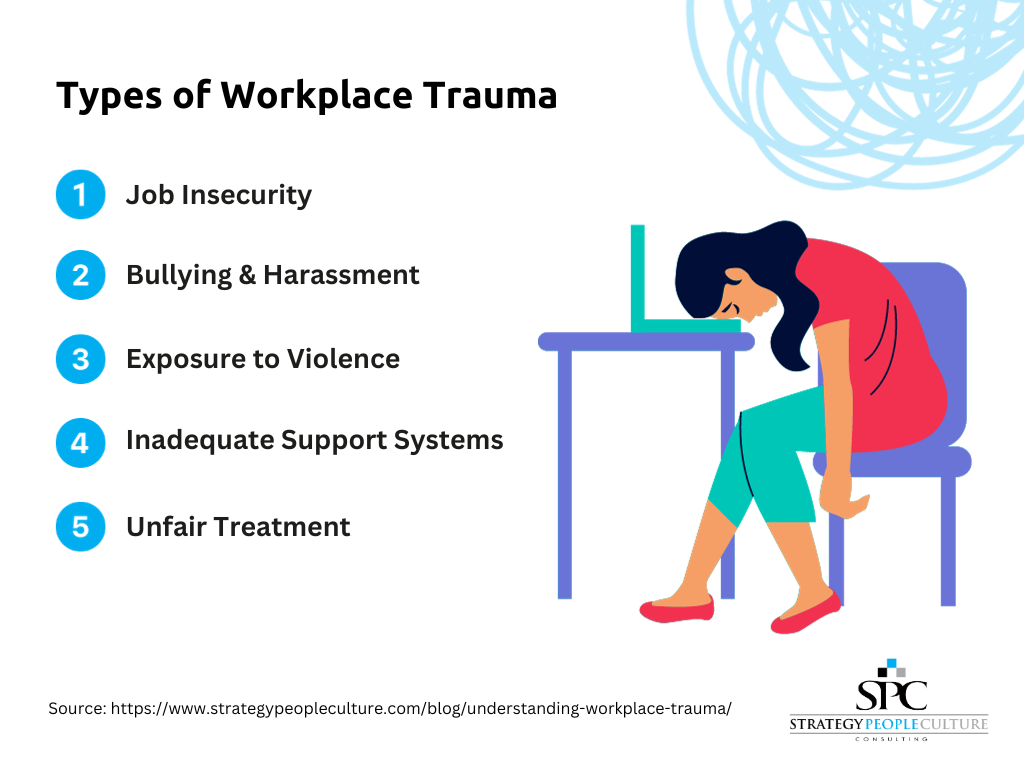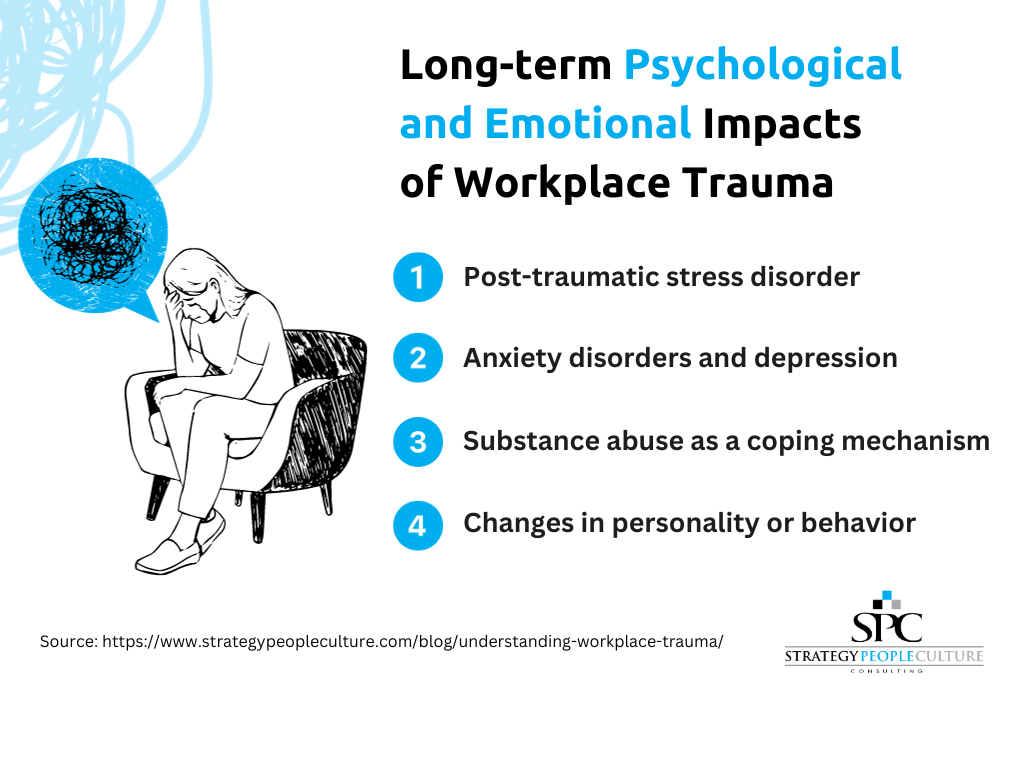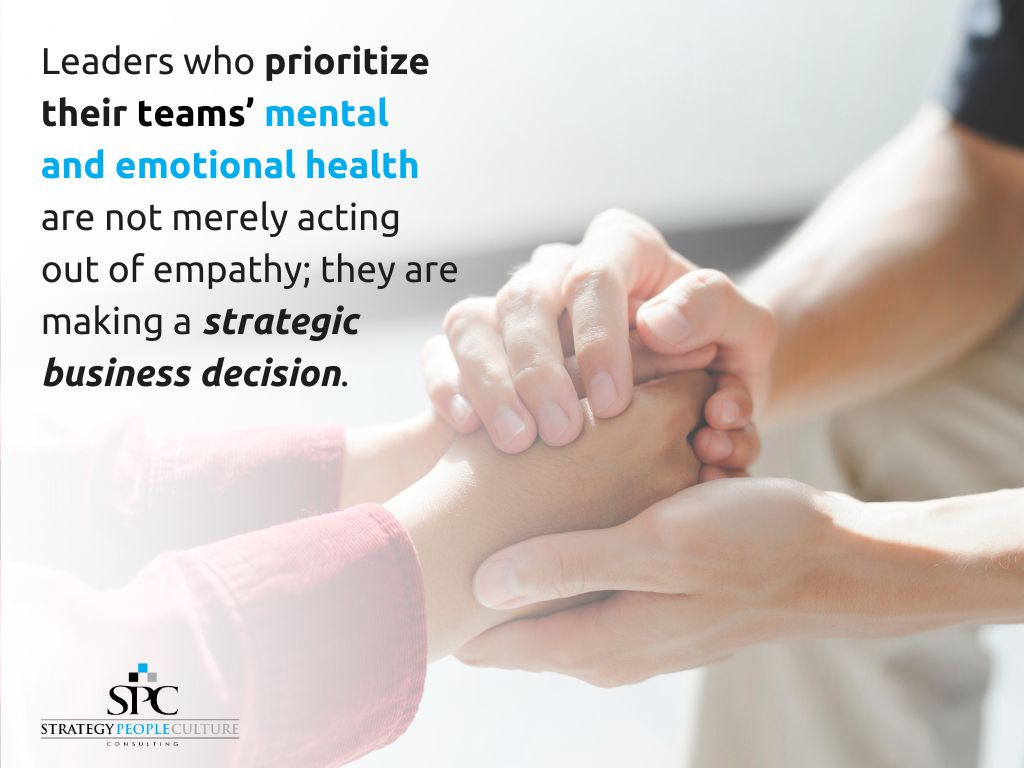Workplace Trauma: Role of Leadership in Recognizing and Alleviating its Impact

Working in teams carries a certain level of stress, and workplace trauma is something that many leaders overlook. Unfortunately, it is far more widespread than most people realize; trauma in the workplace can have crippling effects on employees, their morale, and the positive contributions they can make if not addressed quickly and efficiently. For team leaders, recognizing signs of workplace trauma and having the right strategies to combat it are essential for creating and maintaining a healthy work environment.
This article delves into an analysis of workplace trauma, its repercussions on employees, and the pivotal role of leadership in addressing these concerns. It explores how leaders can proactively identify early signs of distress, effectively respond to traumatic events at work, and implement strategies for long-term prevention.
What is Workplace Trauma?
Workplace trauma, also known as work trauma, is a term used to refer to any psychological or emotional distress experienced by employees in the workplace.
Types of Workplace Trauma

Workplace trauma can arise from a singular traumatic incident or gradually develop due to prolonged stress and anxiety. Some of the most common contributors to workplace trauma are:
- Job Insecurity: Constant fear and stress of job loss or inability to advance in a career
- Bullying & Harassment: Verbal or physical abuse from colleagues, resulting in mental and emotional distress
- Exposure to Violence: Witnessing violent or criminal acts in the workplace
- Inadequate Support Systems: Feeling unsupported by colleagues or supervisors
- Unfair Treatment: Feeling discriminated against, ignored, or disregarded due to unfair policies or practices
Leaders need to recognize the signs of workplace trauma in their teams so they can address them promptly and mitigate its potential effects.
Immediate Impact on Affected Employees
The effects of workplace trauma can differ from person to person. Some individuals may display physical symptoms, others may exhibit emotional distress, while others may not necessarily display either.

The impact of work trauma is not confined to the employees’ professional lives alone. It intrudes into their personal lives, causing a ripple effect that can strain their relationships, reduce their self-esteem, hinder their leisure activities, and overall degrade their quality of life. As employers, your employees’ personal lives are not your concern, except if work is viewed as the key contributor to personal life challenges, then you are likely causing turnover the organization may not even realize, such as “quiet quitting.”
In a society where a significant portion of one’s identity is tied to one’s job, the effects of workplace trauma can drastically shape a person’s self-perception and interaction with the world around them.
Long-term Psychological and Emotional Impacts
Workplace trauma’s psychological and emotional impacts can persist long after the initial incident or period of distress. Research shows that employees who have experienced trauma are more likely to suffer from:
- Post-traumatic stress disorder (PTSD): PTSD at work can manifest through recurring flashbacks, nightmares, and heightened fear or anxiety.
- Anxiety disorders and depression: Anxiety and depression in the workplace can cause a range of symptoms, such as difficulty concentrating, low self-esteem, feeling overwhelmed or exhausted.
- Substance abuse as a coping mechanism: Workplace trauma can lead some individuals to resort to drinking or drug use to cope with distress.
- Changes in personality or behavior: Trauma can cause individuals to become more irritable, withdrawn, or aggressive.

Impact on Employee Performance and Productivity
Workplace trauma can have far-reaching consequences for employers. It can lead to diminished performance and productivity, decreased engagement, absenteeism, and increased stress and anxiety levels.
In addition, workplace trauma can lead to decreased job satisfaction and dissatisfaction with the company as a whole. It can also cause employees to mistrust their leaders or colleagues, further exacerbating workplace tensions.
Effects on Organizational Culture and Dynamics
It is also important to remember the effects of workplace trauma are not just limited to individuals; they can also affect the team as a whole. Unaddressed trauma can result in decreased morale, strained interpersonal relationships, and a hostile work environment.
Moreover, it can impede the organization’s ability to achieve its objectives and goals. Suffering employees may be less motivated and productive, leading to lower performance levels across the board.
Role of Leadership in Addressing Workplace Trauma

As a leader, part of your core responsibility is to ensure the organization is operating as effectively as possible. Recognizing the signs of workplace trauma and addressing it in a timely manner is part of that equation. Ignoring the human good element for a moment, business operations will be affected both upwardly and downwardly based on the effectiveness of your people. Learning and proactively addressing any potential problems or conflicts that could lead to workplace trauma is a preventative measure that will undoubtedly make any business more effective.
There is a compelling moral and business case for addressing workplace trauma: the well-being of employees is inseparable from the health of the business. Leaders who prioritize their teams’ mental and emotional health are not merely acting out of empathy; they are making a strategic business decision. Healthy, resilient teams foster a positive, high-energy work environment, enhancing productivity and creativity.
Practical Steps for Leaders
To ensure that your team is free of workplace trauma, there are a few practical steps you can take as a leader.
- Make mental health and wellness part of the company’s culture. This may include offering mental health resources for employees, such as counseling services and stress management training.
- Establish clear policies and procedures to help ensure that any conflicts or potential problems are addressed promptly and fairly.
- Make sure all employees feel safe and comfortable speaking up about issues they may be facing in the workplace.
- Foster an environment of openness, trust, and respect to create a culture of support where people can openly express their concerns without fear of repercussions.
- Regularly check in with your team and provide emotional support to those who may be struggling.
Mental Health Support and Resources

In the face of workplace trauma, many employers do not know where to go while also recognizing the challenges around privacy and HIPAA-related issues. There are many external resources, such as the National Alliance on Mental Illness (NAMI), which may offer some guidance. These resources are valuable tools in the healing and recovery process, supporting employees grappling with trauma and fostering resilience, emotional intelligence, and overall mental well-being in the workplace. Providing these resources is benevolent and strategically contributes to a productive, engaged, and mentally robust workforce.
Implementing Employee Assistance Programs (EAP) can help employees deal with personal problems that might adversely impact their work performance, health, and well-being. EAPs often provide assessments, short-term counseling, referrals, and follow-up services, ensuring direct access to professional help when needed and contributing to a healthier and more productive workplace. Oftentimes, these programs can be added for free through a health insurance program. The key is to ensure your employees know about the availability and benefits of the program.
Most important is the need for leaders to develop a greater awareness of their surrounding environment as it pertains to the contributors of workplace trauma.
Conclusion
In conclusion, the role of leadership in addressing and mitigating workplace trauma cannot be overstated. Proactive leadership is not just about crisis management; it involves fostering an environment that focuses on mental health and is vigilant about spotting early signs of distress. This requires continuous learning and adaptation to the evolving needs and challenges of the workforce.
Strategy People Culture is committed to helping business leaders create workplaces that challenge their thinking to grow as leaders across the entire business, including finding ways to better recognize, support, and engage employees who may be facing these issues in addition to creating an environment that mitigates the potential for workplace trauma to occur in the first place. .. We provide tailored solutions that address each organization’s unique needs and equip leaders with the tools they need to create healthy, trauma-free work environments. Schedule a consultation today or call (833) ROCK – SPC.
